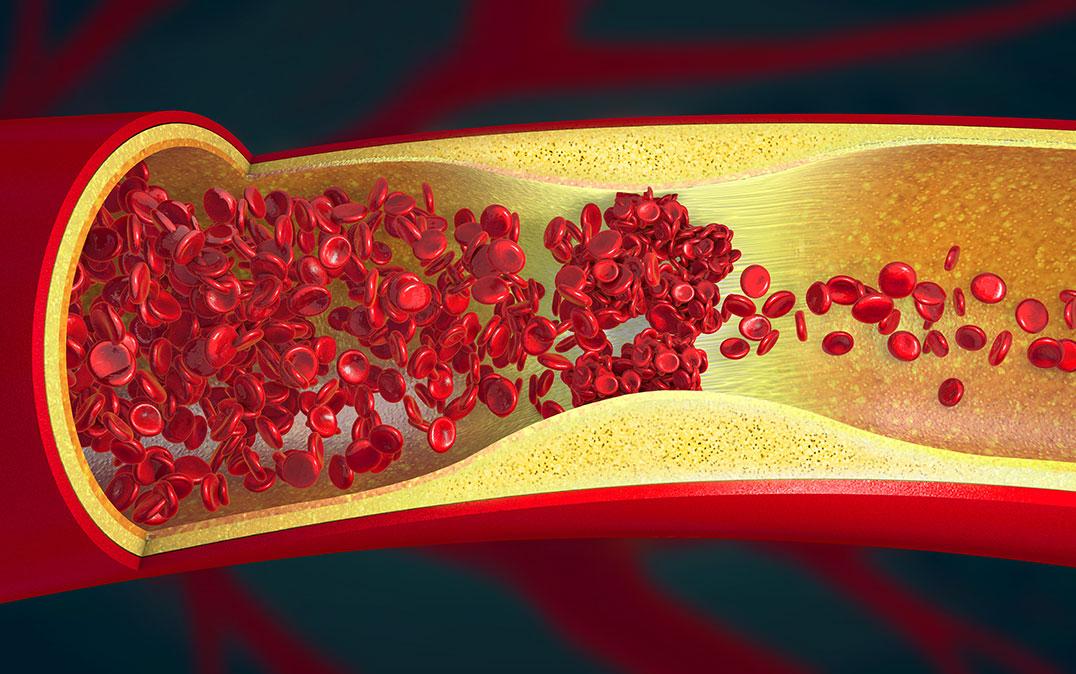Research News
Transdifferentiation: Going Straight to the Source of Vascular Disease
 Image by Christoph Burgstedt/Shutterstock
Image by Christoph Burgstedt/ShutterstockResearchers from the University of Tsukuba and the National Cerebral and Cardiovascular Center identify transdifferentiation as an important process in the development of vascular disease.
Tsukuba, Japan—Vascular diseases such as atherosclerosis, pulmonary hypertension, and cardiac fibrosis are associated with a reorganization of the structure of blood vessels. Researchers led by the University of Tsukuba have demonstrated transdifferentiation, an important process by which this reorganization occurs that holds promise for future treatments for vascular diseases.
Blood vessels are made up of a variety of different cell types, and each cell type has a different job. For example, smooth muscle cells that line a blood vessel can constrict or relax to change its width. Endothelial cells sense the force of the blood rushing past and produce molecules that regulate smooth muscle cell constriction. These different cell types are highly organized within different layers: an inner layer (the intima), a middle layer (the media), and an outer layer (the adventitia). When disease or injury occurs, this can lead to an increased number of smooth muscle cells and the formation of a new layer: the neointima. This serves to offset the effects of damage, but also leads to narrowing of the vessel and impaired function.
"Identifying the source of neointimal cells and the molecules that drive their differentiation is crucial to our understanding of vascular disease." says senior author Professor Hiromi Yanagisawa. "We wanted to know whether the transdifferentiation of endothelial cells into smooth muscle cells is an important contributor to neointimal formation."
By temporarily tying off a major blood vessel in the neck, the researchers were able to simulate vessel injury in mice as it occurs in disease. By examining these injured blood vessels, they were able to determine that cells in the neointima of these vessels possessed markers of both endothelial cells and smooth muscle cells. This suggests that endothelial cells were in the process of transdifferentiating (i.e., converting) into smooth muscle cells.
"We also found a variety of molecules that are associated with smooth muscle function on the surface of endothelial cells after ligation, suggesting that these cells are functionally capable of behaving like smooth muscle cells." explains lead author Professor Yoshito Yamashiro, who is currently affiliated with the National Cerebral and Cardiovascular Center.
When the gene encoding HIF1α, a molecule that is activated by low oxygen levels, was selectively knocked out in the endothelial cells of these mice, the formation of a neointima occurred at a reduced rate, while markers of smooth muscle cell transdifferentiation were reduced. This suggests that HIF1α is a key driver of this process.
Taking this one step further, the researchers were able to show that HIF1α is responsible for similar changes in cultured human endothelial cells, which suggests that their findings will be transferable to human vascular disease. This may lead to therapies that work by controlling the formation of the neointima, which will be relevant to a significant portion of vascular diseases.
###
This work was supported in part by the Japan Foundation for Applied Enzymology and Takeda Science Foundation, the MSD life Science Foundation, SENSHIN Medical Research Foundation, KANAE Foundation for the Promotion of Medical Science, The NOVARTIS Foundation for the Promotion of Science, The MITSUBISHI Foundation, Japan Intractable Diseases (Nanbyo) Research Foundation all to Y.Y, Japan Agency for Medical Research (AMED, Grant Number JP21ek0210158 to Y.Y., JP21gm6210017 to Y.K.) and the JSPS KAKENHI (Grant Number JP21H03804 to K.N., JP20K07295 to S.M., JP20K07072 to S.T. and JP21H02677 to Y.Y. and JP17H04289 and JP20H03762 to H.Y.).
Original Paper
The article, "Partial endothelial-to-mesenchymal transition (EndMT) mediated by HIF-induced CD45 in neointima formation upon carotid artery ligation," was published on Cardiovascular Research at DOI: 10.1093/cvr/cvac190
Correspondence
Associate Professor YAMASHIRO Yoshito (Current post: Laboratory Chief of Department of Advanced Medical Technologies, National Cerebral and Cardiovascular Center)Professor YANAGISAWA Hiromi
Life Science Center for Survival Dynamics, Tsukuba Advanced Research Alliance (TARA), University of Tsukuba
Related Link
Life Science Center for Survival Dynamics, Tsukuba Advanced Research Alliance (TARA)




